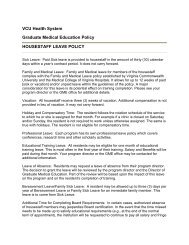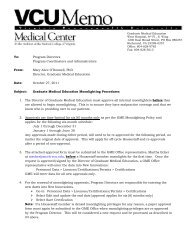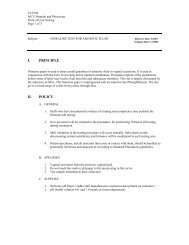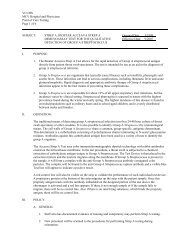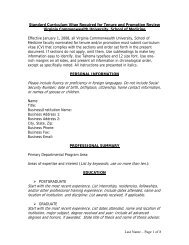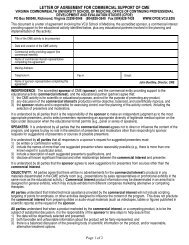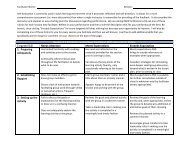Excellence Everywhere - National University of Ireland, Galway
Excellence Everywhere - National University of Ireland, Galway
Excellence Everywhere - National University of Ireland, Galway
- No tags were found...
Create successful ePaper yourself
Turn your PDF publications into a flip-book with our unique Google optimized e-Paper software.
n The Paris Convention. Signed in 1883, everymember country must grant to nationals <strong>of</strong> othercountries the same IP protection it grants to its owncitizens. More practically, it allows inventors in onenation to use the patent filing date in that nation asthe effective date in another nation, provided thatthey apply within 12 months <strong>of</strong> the first filing.n Patent Cooperation Treaty (PCT). Filing a patentin all countries would be extremely costly. ThePCT coordinates the filing <strong>of</strong> international patentapplications among nearly 140 countries. A PCTfiling contains the nuts and bolts for an examination,such as a search <strong>of</strong> prior art and a description<strong>of</strong> claims. A preliminary examination rules on itspatentability. Finally, each contracting national orregional patent <strong>of</strong>fice (see the European PatentOffice (EPO), below) is free to carry out a formalexamination and decide whether to issue a patent.Aside from the unified procedure, the advantagesto filing a PCT are streamlining and buying timebefore the national examinations commence. Butlocal jurisdictions charge fees for filing, issuing andmaintaining the patent.The Big ThreeAmong the world’s patent <strong>of</strong>fices, the biggest arethe European Patent Office (EPO), the United StatesPatent and Trademark Office (USPTO) and the JapanPatent Office (JPO). Together, the USPTO and theEPO review the largest number <strong>of</strong> the world’spatent applications, but Japan’s patent <strong>of</strong>ficeactivities are growing fast.China is also fast becoming a world leader inintellectual property, and Western countries arescrambling to establish trade agreements toharmonize patent information (see “The World’sMost Active Patent Offices”). The differencesamong the big three are first-to-invent and first-t<strong>of</strong>ile,and that the U.S. permits patents on s<strong>of</strong>twareand business methods. While the EPO grants onlyone patent for any given inventive system, thesame invention in Japan could constitute up to 10different patents, with every aspect <strong>of</strong> the inventionfiled separately.Like WIPO, the EPO does not issue patents, butcarries out formal examinations on behalf <strong>of</strong> 37European countries, along with examining oppositionsto patents already granted.The World’s Most Active Patent OfficesCountry/Region # <strong>of</strong> Examiners # <strong>of</strong> ApplicationsUnited States(USPTO)Europe (EPO)Japan (JPO)China (SIPO)South Korea(KIPO)India3,4003,5001,3582,000728135400,000208,000400,000175,000160,00014,500Data assembled from national sources between 2004 and 2006.Building a more unified systemAt the end <strong>of</strong> the General Agreement on Tariffsand Trade (GATT) treaty, which created the WorldTrade Organization (WTO), the discussion turns tothe wide variation <strong>of</strong> protection and enforcement<strong>of</strong> intellectual property rights. As IP rights becamemore important in global trade, these differencesbecame a source <strong>of</strong> tension in internationalrelations. New trade rules were seen as a way tointroduce more order and predictability, and fordisputes to be settled more systematically. At theturn <strong>of</strong> the century, “harmonization” became thecatchword. In mid-2000, the big three signed thePatent Law Treaty, which charts a path towardsinternational normalization by 2010.The WTO oversees the Agreement on Trade-RelatedAspects <strong>of</strong> Intellectual Property Rights (TRIPS), a1995 agreement that attempts to “narrow the gapsin the way that these [intellectual property] rightsare treated around the world, and to bring themunder common international rules.” The TRIPSAgreement is expected to do a number <strong>of</strong> things,including increasing royalty and license fees todeveloping nations and increasing foreign directinvestment in the developing world.Ratification <strong>of</strong> the TRIPS Agreement became amandatory requirement for membership in the WTO.The agreement attempts to gather and normalizeall aspects <strong>of</strong> IP rights and their enforcement,including protecting trade secrets, establishingtransparency, and clarifying copyrights. Theagreement attempts to crack down on reverseengineering <strong>of</strong> biotechnology products, and requirescompanies in developing countries to adhere toGood Manufacturing Practice (GMP) standards.intellectual property161



